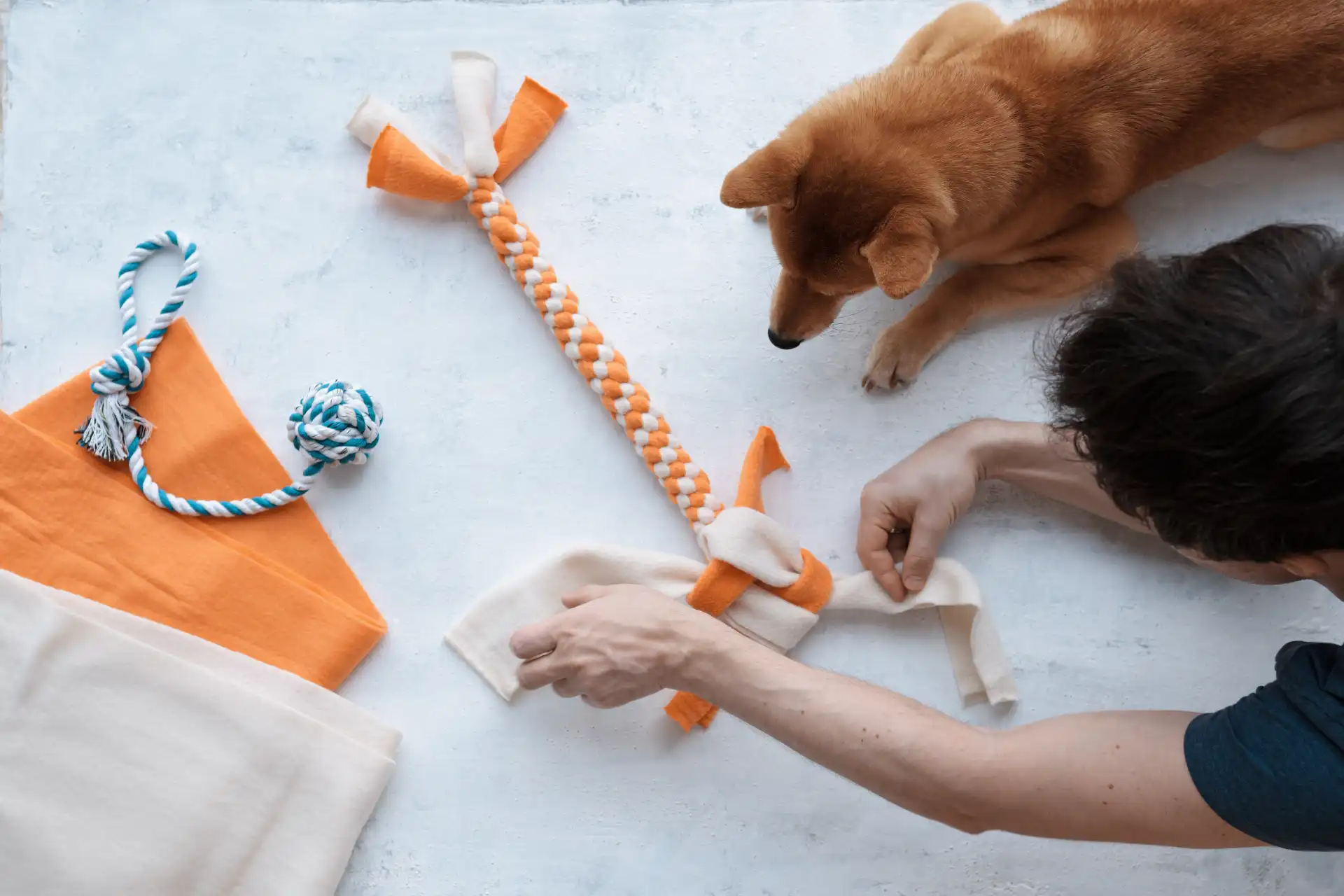If your pets destroy store-bought toys in days—or hours—you’re not alone. But the good news? With some basic supplies and creativity, sewing pet toys at home is both fun and cost-effective. You can make toys that are safer, last longer, and are custom-made for your cat or dog’s play style.
In this tutorial, we’ll walk you through multiple toy types, from plush bones to catnip mice, plus safety tips, recommended fabrics, and how to upcycle household materials into irresistible playthings.
Why Sew Your Own Pet Toys?
- Save money: Use leftover fabric and filling instead of buying new toys.
- Control materials: Avoid synthetic stuffing, choking hazards, or harmful dyes.
- Customize for your pet: Tailor toy shapes and sizes to your pet’s preference and size.
- Reduce waste: Upcycle old clothes, socks, or denim for sustainable fun.
Best Fabrics & Materials for Sewing Pet Toys
Choose materials that are safe for chewing, durable, and washable.
- Cotton canvas or denim: Tough and chew-resistant.
- Fleece: Soft, non-fraying, great for tug toys and plushies.
- Old jeans or flannel shirts: Ideal for durability and scent familiarity.
- Stuffing: Use polyfill, fleece scraps, or old socks. Avoid beans or plastic beads.
- Extras: Crinkle material (e.g. empty chip bags), catnip, or squeakers (only if supervised).
For safe sewing materials, check out ASPCA’s Toy Safety Tips.
Easy DIY Dog Toy: Stuffed Bone
Supplies:
- Heavy-duty cotton or canvas
- Stuffing (polyfill or fleece scraps)
- Optional: squeaker insert
Steps:
- Download or sketch a basic bone shape (about 10–12 inches long).
- Cut two identical pieces from your fabric.
- Sew right sides together, leaving a 2–3” gap.
- Turn inside out, stuff firmly, insert squeaker if using.
- Topstitch gap closed securely.
This toy is ideal for light to moderate chewers. Avoid for aggressive shredders unless reinforced heavily.
Easy DIY Cat Toy: Catnip Mouse
Supplies:
- Felt or fleece scraps
- Catnip (optional but highly recommended)
- Embroidery floss or thread
Steps:
- Cut two teardrop shapes and one small rectangle for the base.
- Sew together along the curve, then attach the base.
- Before closing, add a teaspoon of dried catnip and stuffing.
- Stitch tail with yarn or knotted floss.
Pro tip: Add a small bell or crinkle paper for extra fun. Always supervise your cat the first time.
No-Sew Tug Toy for Dogs
If you’re short on time or sewing skills, try this quick project:
- Cut three strips of fleece (2″ wide, 24–30″ long).
- Knot them together at one end, then braid tightly.
- Tie a knot at the other end and trim excess.
This toy is washable, chewable, and perfect for tug-of-war games!
Tips to Make Your Toys Last Longer
- Double-stitch seams or use zigzag stitch for durability.
- Reinforce high-stress areas with a second layer of fabric.
- Use heavier thread (e.g. upholstery thread) if machine allows.
- Rotate toys weekly to keep interest high and allow repairs.
Pet Toy Safety Checklist
- No loose buttons, beads, or parts your pet can swallow.
- Always supervise with squeakers or bells.
- Discard any toy with holes or exposed stuffing.
Design Variations Based on Pet Type
1. For Puppies or Kittens:
- Use soft fleece and lighter stuffing
- Keep toys small and squeaker-free
2. For Heavy Chewers:
- Double-layer canvas or denim
- Triple-stitched seams with reinforced corners
3. For Older Pets:
- Soft plush fabric for sensitive teeth
- Catnip or scent-infused toys to stimulate play
Upcycling Ideas for Sewing Pet Toys
Don’t toss old clothes or linens—turn them into playthings!
- Use sock pairs to create mini plush animals
- Cut up a worn bathrobe into tug strips
- Old jeans make tough chew-proof toys
Wash & Care Guide for Homemade Toys
Wash fabric toys every 1–2 weeks using a mild detergent. Avoid bleach or strong scents. For catnip toys, freeze them in a bag to refresh the scent or replace the filling after a few weeks.
Final Thoughts on Sewing Pet Toys
Sewing pet toys is a practical, fun way to bond with your pets while using up scrap fabric. Whether you’re crafting a tug toy for your dog or a crinkle-filled fish for your cat, handmade toys can be just as entertaining—and much safer—than store-bought alternatives.
Want more DIY ideas? Visit our full Sewing Blog for Cats and Dogs or explore our DIY Pet Bandana Tutorial.

